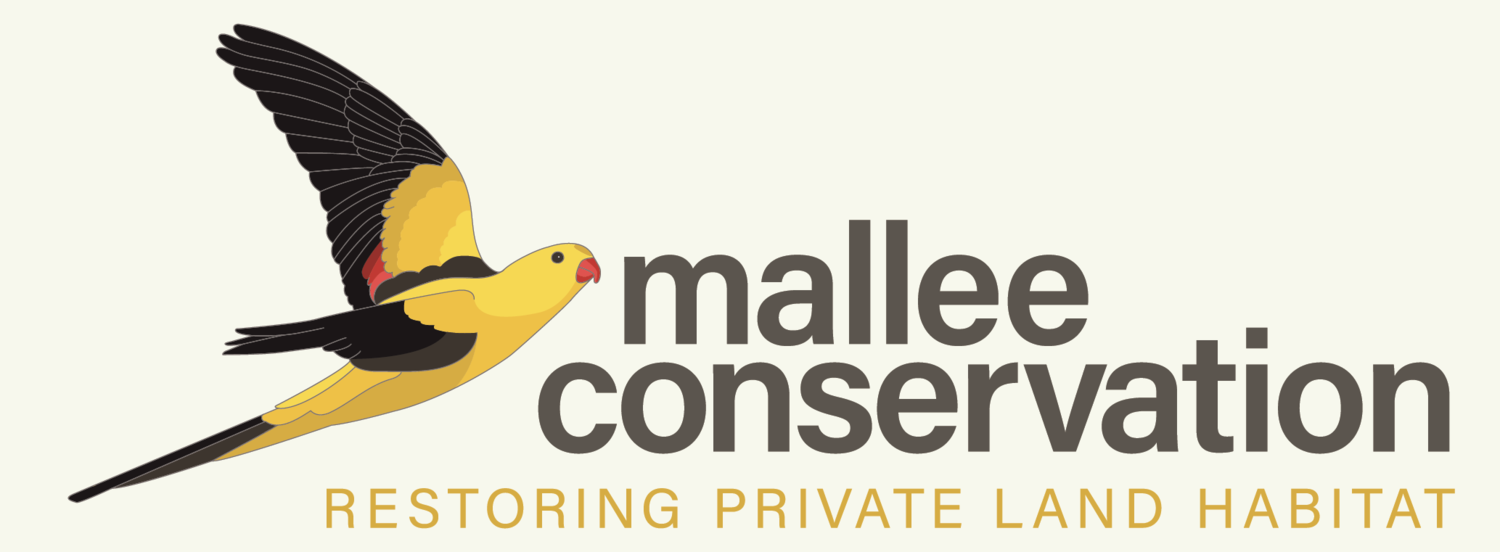The Mallee Looper - project overview
The Mallee Looper caterpillar eats the leaves of Mallee eucalypts. The current outbreak is causing complete defoliation of entire trees over thousands of hectares.
Without a tree canopy, these areas are hotter than unaffected areas. Defoliation also means trees put their energy into regrowing leaves rather than flowering and fruiting. This reduces nectar availability for birds and insects and could impact seedling recruitment post fire. Repeated defoliation can cause tree death.
Timeline of the Mallee Looper outbreak
· 2022* - Total loss of leaves of Mallee Eucalypts recorded across large areas of the Mallee in South Australia. Similar defoliation reported in the Victorian Mallee (Murray Sunset National Park).
· 2023 – Worst year for defoliation impacts. The culprit identified as the “Mallee Looper”, a caterpillar belonging to a moth in the Arhodia species complex.
· 2024 – Continued defoliation (less extensive) but, in some areas of South Australia, widespread death of Mallee trees following several years of attacks by Mallee Loopers.
· 2025 – Continued defoliation moving south and east. First records of outbreaks near Hattah.
* Looper caterpillars grow over December-February, and defoliation is most noticeable from January onwards. 2022 refers to the 2021/2022 “Mallee Looper season”, etc.
Defoliation of Mallee trees in Hattah Kulkyne National Park, February 2025.
2025/2026 “Looper season” in Victoria - our project
Friends of Mallee Conservation is partnering with Wildlife Unlimited to monitor the development of new Mallee Looper outbreak areas near Hattah:
· Identification – There appears to be two or three species of Arhodia moth in the Mallee. We will be collecting samples to help entomologists describe all the species and the Mallee Looper.
· Moths– November
o Using UV light traps to monitor the triggers, timing and abundance of moths as they emerge (caterpillars are currently hiding in the leaf litter as pupae).
o Community will also be looking for moths across the Mallee so we can understand baseline moth abundance in “non-outbreak” areas.
o Female moths “call” the males in with sex pheromones. SA will be trying to extract these chemicals, and we will be trialing virgin females as lures.
· Caterpillars– December-January
o Abundance - monitoring how abundance changes over time. Are they killed by hot days? Predated? Both daytime and night counts (some caterpillars fluoresce under UV!)
o Growth rate (it’s fast) - We’ll be measuring the width of caterpillar head capsules (!!) as they progress through different sizes (instars).
· Eucalypts
o Which eucalypt species do caterpillars prefer, both in the field and in caterpillar cages? We think caterpillars initially eat narrow-leaved mallees, like Eucalyptus gracilis, but as the outbreak develops, they eat everything.
o How resilient are different eucalypt species to defoliation - ability to regrow leaves and impacts on flowering and fruiting?
· Mapping outbreaks
o Verifying community observations of caterpillars and newly defoliated areas.
o Remote sensing - Satellite imagery of “greenness” (NDVI) shows impacted areas as declining greenness in mallee woodlands between November and March. We can use this to track the spread of the outbreak.
Can we stop the Mallee Looper outbreak?
There are currently no control options for the Mallee Looper. And we don’t know if treatment of this native species may be required in the future.
However overseas control of native caterpillars that cause defoliation of their native habitats (Spruce Budworm in Canada) focuses on early intervention in localised, emerging hotspots, before a full outbreak develops. Ongoing monitoring detects when the caterpillars reach a threshold abundance, triggering treatment. Synthetic pheromone lures are used to disrupt mating and natural biocontrol like Bacccilus (Btk) bacterium is sprayed on the food plants to kill young caterpillars (Btk is less effective on large caterpillars).
Our research will contribute to
· developing effective (and simple) monitoring techniques,
· identifying where early outbreaks develop, and
· understanding the Mallee Looper life cycle.
Any control options, if they are required, will need this information.
What you can do
· Assist with monitoring the Hattah sentinel sites,
· Host a moth trap (November),
· Look out for caterpillars and damage caused by the Mallee Looper (January onwards)
Report your observations:
· Fiona - 0475 291 744 or malleeconservation@gmail.com or
· iNaturalist https://www.inaturalist.org/projects/looking-for-mallee-loopers
This project of the Regional Drought Resilience Planning program is jointly funded through the Australian Government’s Future Drought Fund, the Victoria Government and the Natural Resources Conservation Trust.


